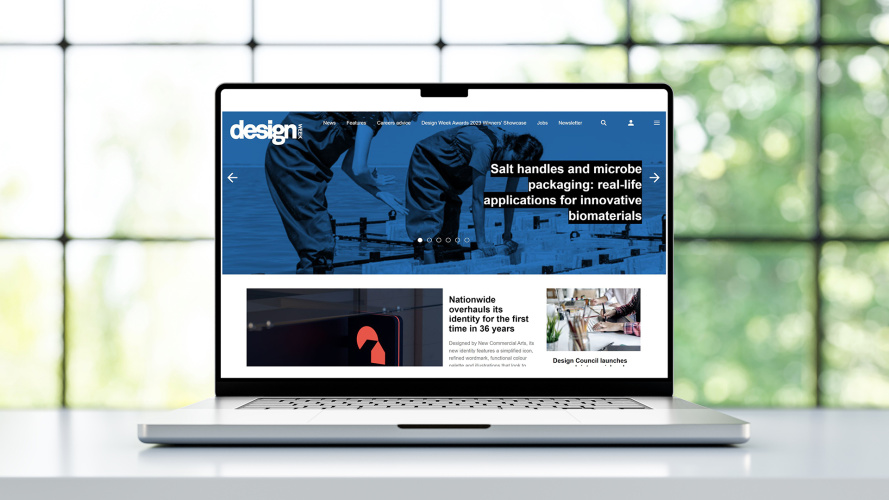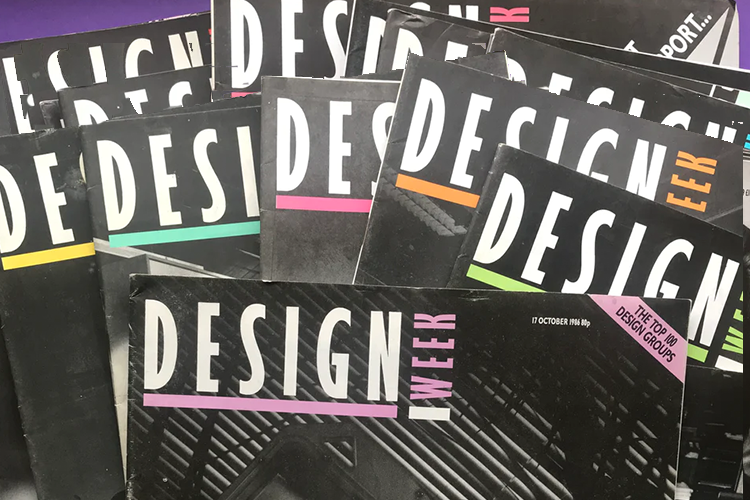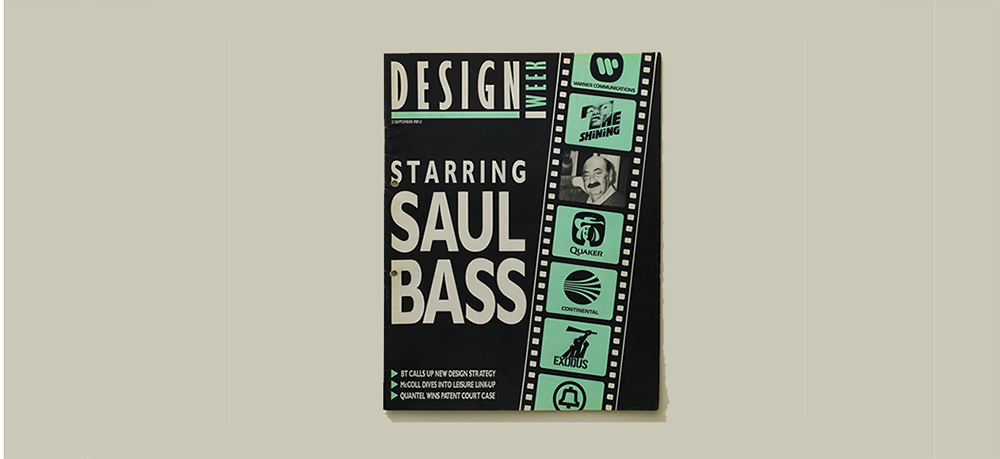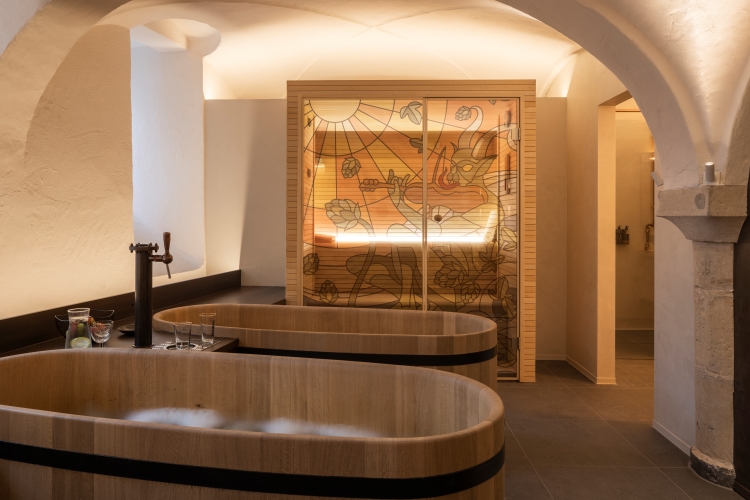“We should be more bullish”: Priya Khanchandani on curating design
The Design Museum head of curatorial once tweeted to invite more people to pitch exhibition ideas; as The Offbeat Sari opens she discusses the change called for.
“Fancy sending me an exhibition idea? I used to be drowning in pitches as a magazine editor and think we should be more bullish about proposals in the curatorial world!”, tweeted the Design Museum’s head of curatorial Priya Khanchandani shortly after she took on the role. As her latest exhibition The Offbeat Sari opens, almost three years into her time at the museum, she expands on what it was she was looking for when she sent the message.
“As an editor I would receive pitches every single day”, she says, speaking of her previous role at design publication Icon. On joining the museum, however, she discovered that “there didn’t seem to be as free flowing a culture of pitching in a gallery context”.
“I think there is an idea of an institution as being not as open to new ideas from the outside”, she says. “My tweet was responding to that culture and trying to encourage more people to feel empowered to propose ideas to institutions, and feel that their stories, that their interests, can be reflected in the institutions that serve them”.

Pitches typically come from “freelance curators and people who maybe have an academic background in a particular subject, who are interested in disseminating that [knowledge] through a gallery context”, she says. But sometimes, “expertise is formed in other ways”.
This might be academia, or journalism – which helped build some of her own design expertise – while on other occasions ideas have come from collectors and designers.
All of this she caveats heavily with a focus on expertise: “Of course you do need to be a specialist in the subject or have authority over it on some level, and also understand how to make an exhibition in order to pitch”, she says. “The craft of making exhibitions is really interesting and quite specific”, she adds.
“It involves forming a narrative, understanding how to work within a space, how to engage a broad audience, and translate sometimes complex ideas to lots of people.”

Opening this up presents a challenge, as attaining expertise can also rely on access. Khanchandani adds that there are occasions where someone might pitch a great idea but lack necessary experience. “Sometimes we pair them with a co-curator at the museum”, she explains.
There is also a need for “some kind of archive”, whether object-based, or “an archive beyond the literal”, such as the online material at the heart of ASMR-focused exhibition Weird Sensation Feels Good. “There has to be a compelling body of work”, she adds.
The upcoming exhibition Skateboard, slated for October 2023, will be created between a skateboard collector, industrial designer Jonathan Olivares and a curator from the museum. For previous exhibition, Waste Age, in order to tackle a subject that was “quite contentious, quite nascent”, the museum brought in “a diverse range of views on the subjects of circular economy and the impact of climate change on design”, she says.
“Bringing in different voices can help solidify ideas and broaden our scope of thinking”, she adds.
Her latest exhibition is the Offbeat Sari, opening today, 19 May 2023. While this is a more personal project – “I’ve been thinking for about 12 years about how we can represent South Asia within a gallery space”, she says – it fits into a wider movement to change how design is curated, as well as a factor that underpins her own mission at the Design Museum.
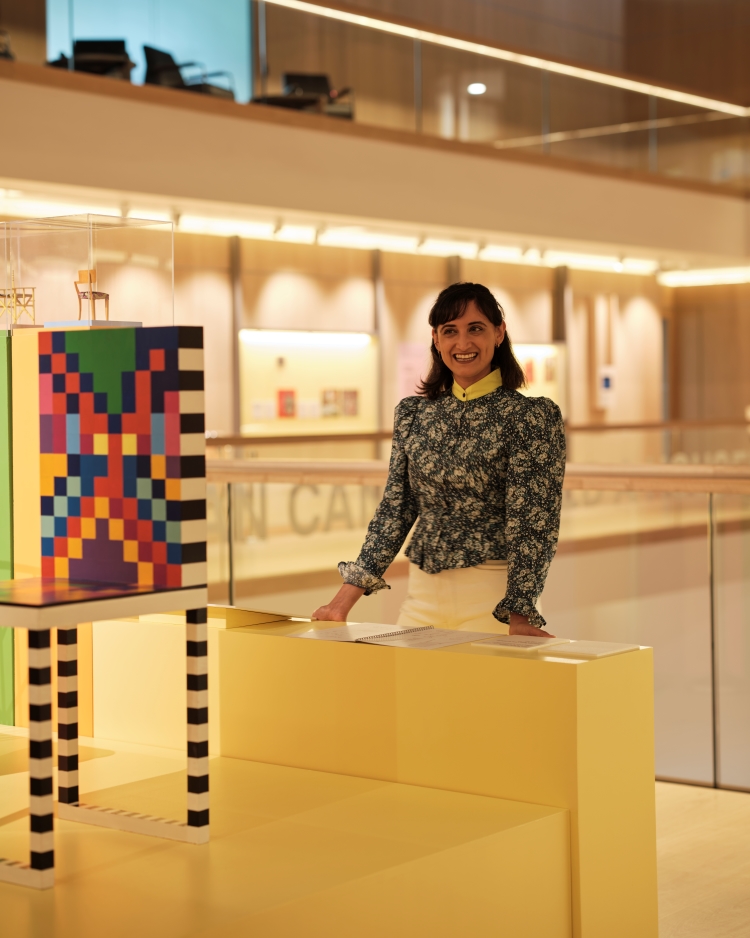
Curating exhibitions such as Yinka Ilori: Parables for happiness, in the more “democratic” space of the museum’s free-to-access atrium, is part of diversifying the museum’s programme, and showing “how diaspora and the meeting of cultures can result in innovation and new visual codes”, she explains.
“Across the landscape of culture, we’re looking to re-evaluate how we tell stories, who tells them and who they are about – and that applies equally to museums. Museums obviously inherit a long legacy of exclusion, founded on colonial principles of objectifying other cultures and defining them through a Western gaze”, says Khanchandani.

At the Design Museum – which itself exists in the former Commonwealth Institute building, remodelled by OMA and John Pawson in 2016 – “we’ve never had an exhibition on South Asian design before”, she says.
Arriving on the exhibition subject, she says the sari “felt like a really interesting lens through which to present contemporary India here, and perhaps challenge notions of Indian design being associated with craft, or a kind of timeless notion of South Asia, which no longer applies”.
“I’ve been following its evolution in recent years and it’s just amazing – the innovation and creativity, and the experimentation that is going on: on the part of designers, wearers, and also crafts people.”

“I hope that the diversity of saris on show helps challenge the idea of the sari as something timeless, as something representing a homogenous idea of India, which is of course a place of over a billion people and has a multiplicity of cultures”, she adds.
The first section, called Transformations, “is about design and how designers are reforming the sari and turning it into a 21st century garment”, she says. Visitors enter the space, greeted by sari-adorned mannequins on a tiered circular plinth. Displaying a luscious array of material, print, embellishment and drape, each one is “worn in different contexts, created for different purposes”, Khanchandani says.
The second, called Identity and Resistance, “is focusing on wearers and how they are embodying the sari in new ways.” This, “hopefully shows how the sari […] is in a sense, a feminist garment, and helps express its agency, rather than passivity, domesticity or ideas of sacrifice”.
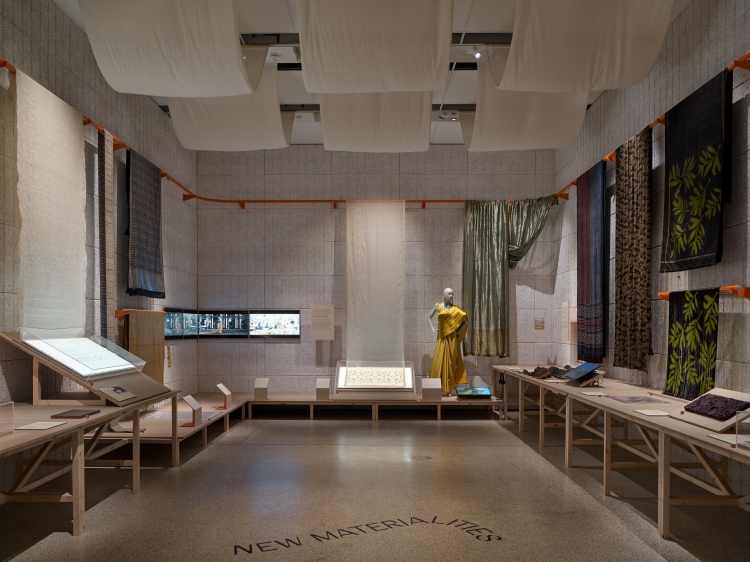
The third section, New Materialities, is about recent innovations in materiality, surface, colour, weave and textures, combining the traditional with the unexpected. Examples include a design which uses ink distilled from pollution by Akaaro, or weaving with steel, as designer Rimzim Dadu does.
“Showstoppers” include a sari worn at the 2022 Met gala by Natasha Poonawalla, which combined a gold Sabyasachi sari with a gold bustier by Schiaparelli, or a sculpture by Bharti Kher, where its resin-layered form, “shows the resonance of the sari and the spectrum of ideas that can spin off from it”, Khanchandani says.

Also to note is the diversity of drape styles on show. While one was dominant for some time, Khanchandani explains, there has been a recent resurgence in more diverse styles being resurrected and shared online; to document this through the drapes in the show, the museum consulted with historian and drape expert Rta Kapur Chishti, she explains.
Meanwhile the design brief – for 3D design by Studio Mutt, and 2D design from Sthuthi Ramesh, who did the identity for Manchester’s South Asia Gallery, while Hingston Studio created the exhibition campaign – “wanted to represent India in ways that used colour, but do justice to Indian design in a contemporary sense and do not pander to cliches”, she says. References include street graphics, Indian Modernist architecture and tube lighting to evoke Indian festivals.
Returning to the wider subject of how a “kernel of an idea” might grow into a design exhibition, Khanchandani explains that ideas need to “connect with the Museum’s mission and values”, such as “building a public awareness of design, reflecting the designer’s role at the forefront of social change, and serving the design community”.
But beyond that, “I guess there’s a kind of magic factor”, Khanchandani adds.
Like a pitch to an editor, “you know that magic of what makes a good story, what makes a good exhibition”. While she believes you “develop a nose for it” over time, still “it can be subjective”, she says, “so we bring different people into the room”.
Video and featured image from Hingston Studio. Banner image, Andy Stagg for the Design Museum.
-
Post a comment


